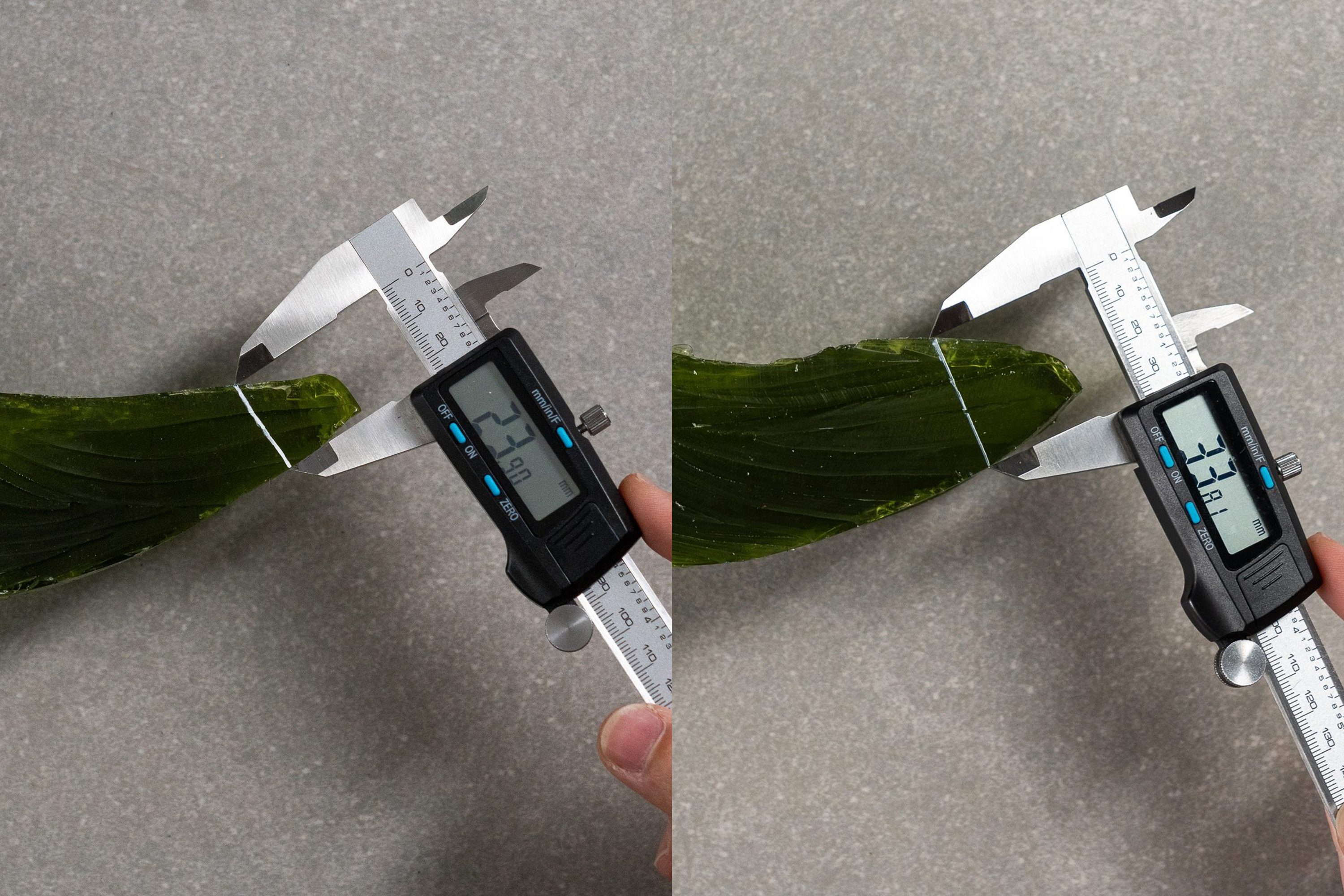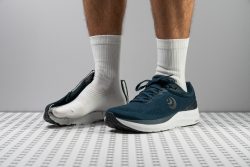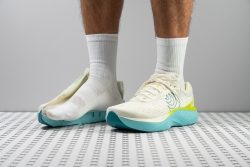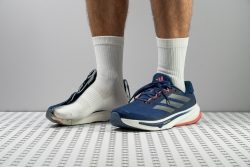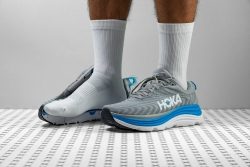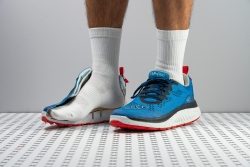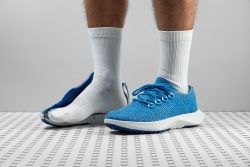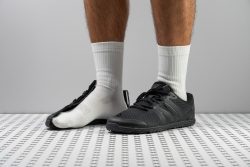7 Best Walking Shoes With A Wide Toebox in 2025
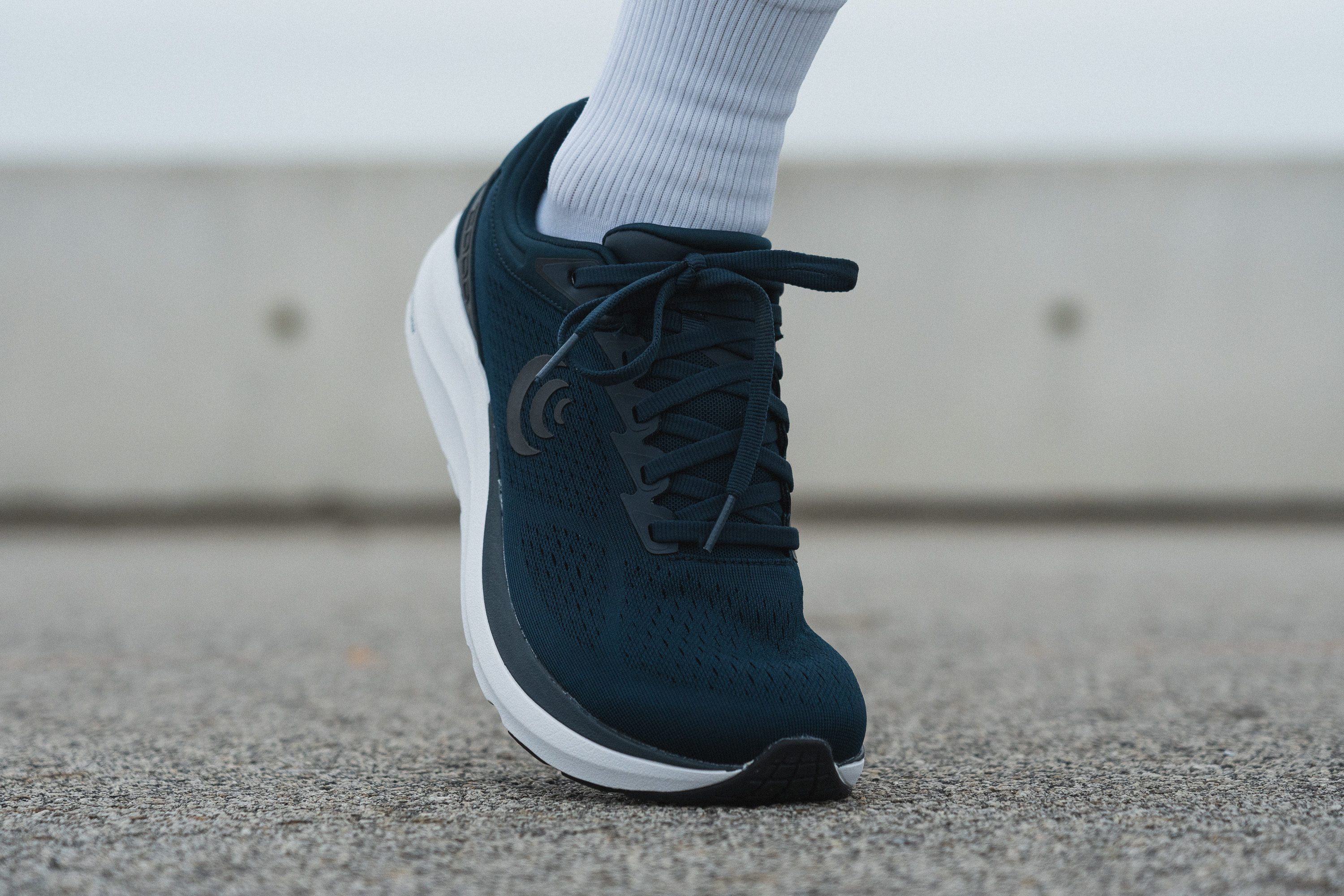
We buy shoes ourselves. We earn commissions when you buy through us, at no extra cost. Why trust us
Wide foot-shaped toeboxes are most often associated with barefoot or minimalist shoes (i.e. Xero Shoes). However, there are quite a few regular cushioned shoes with pretty wide non-tapered toeboxes that accommodate all five toes comfortably. Actually, some footwear brands specifically design athletic shoes with large and round toeboxes (i.e. Altra and Topo Athletic). And those are not some ugly orthopaedic shoes.
Even though roomy walking shoes are still the minority, there are significantly more options today as opposed to a few years ago. You even get to choose from multiple categories!
How we test walking shoes with a wide toebox
We use a custom gel substance to create one-to-one replicas of each walking shoe’s interior and measure its dimensions meticulously with a digital calliper. This allows us to filter out the shoes with truly wide toeboxes.
We then take each shoe through dozens of wear and lab tests to further inspect its shock absorption, stability, durability, among other key characteristics. This includes cutting the shoe in half and using callipers, durometers, and even some specialised machinery to retrieve every measurable parameter.
On top of it all, we deny sponsorships and buy all tested shoes with our own money to avoid brand loyalty and bias.
Best walking shoes with a wide toebox overall
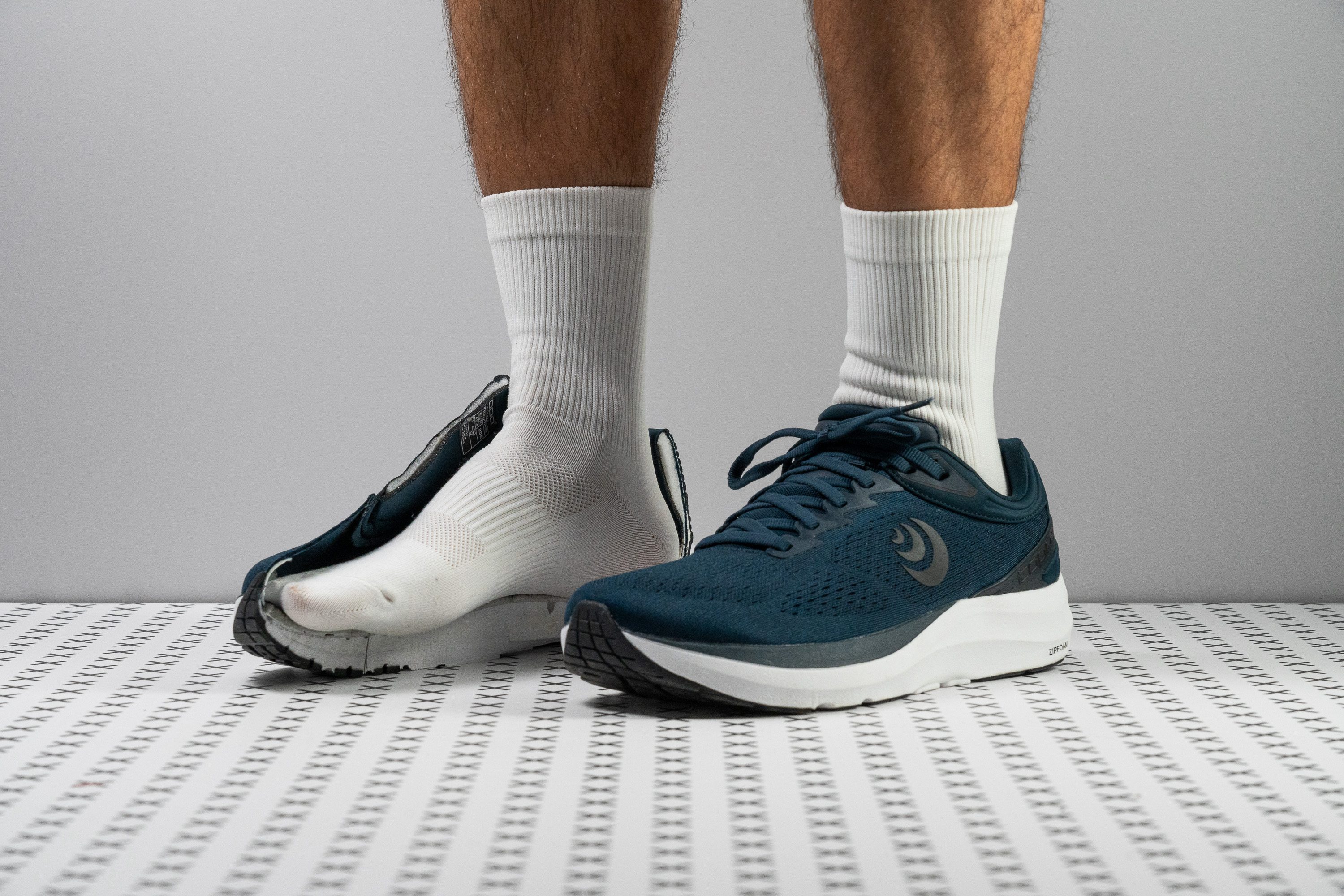

















































What makes it the best?
The Topo Phantom 3 offers a one-of-a-kind fit with its exceptionally roomy space, both horizontally and vertically, making it our top wide toebox walking shoe. Besides its accommodating fit, it offers a fluid yet surefooted ride that keeps our wandering strolls fuss-free, as proven by our lab results.
Phantom 3 features a rounded silhouette, offering a massive 82.1 mm big toe area. Being 11.4% wider than average, it assures us it can accommodate very broad feet. Besides its width, it offers a generous vertical clearance of 29.2 mm vs. the 27.1 mm average. Even those with high-volume toes will feel at home in this shoe.
The platform made us feel confident and secure in our steps. After cutting the shoe in half, we unveiled two foam densities: a balanced 19.7 HA top layer and a denser 24.7 HA bottom layer to stabilise us.
What boosted the shoe’s comfort besides its spacious fit is its highly flexible build. In our bend test, it emerged 19.6% more adaptive than average, which means it takes less effort to move with the shoe.
We think the upper still has room for improvement. Besides its disappointing performance in our durability test (2/5), it also offers subpar breathability (3/5).
Pros
- Spacious, foot-shaped toebox
- Good versatility as a daily trainer
- Ideal for high-volume feet
- Lightweight
- Premium Ortholite insole
- Well suited for midfoot and forefoot strikers
- Comfortable for walking too
- Stable ride
Cons
- Needs a better foam
- Firmer feel
- Not for narrow feet
- Not for narrow feet
Cushioned walking shoes with the best shock absorption
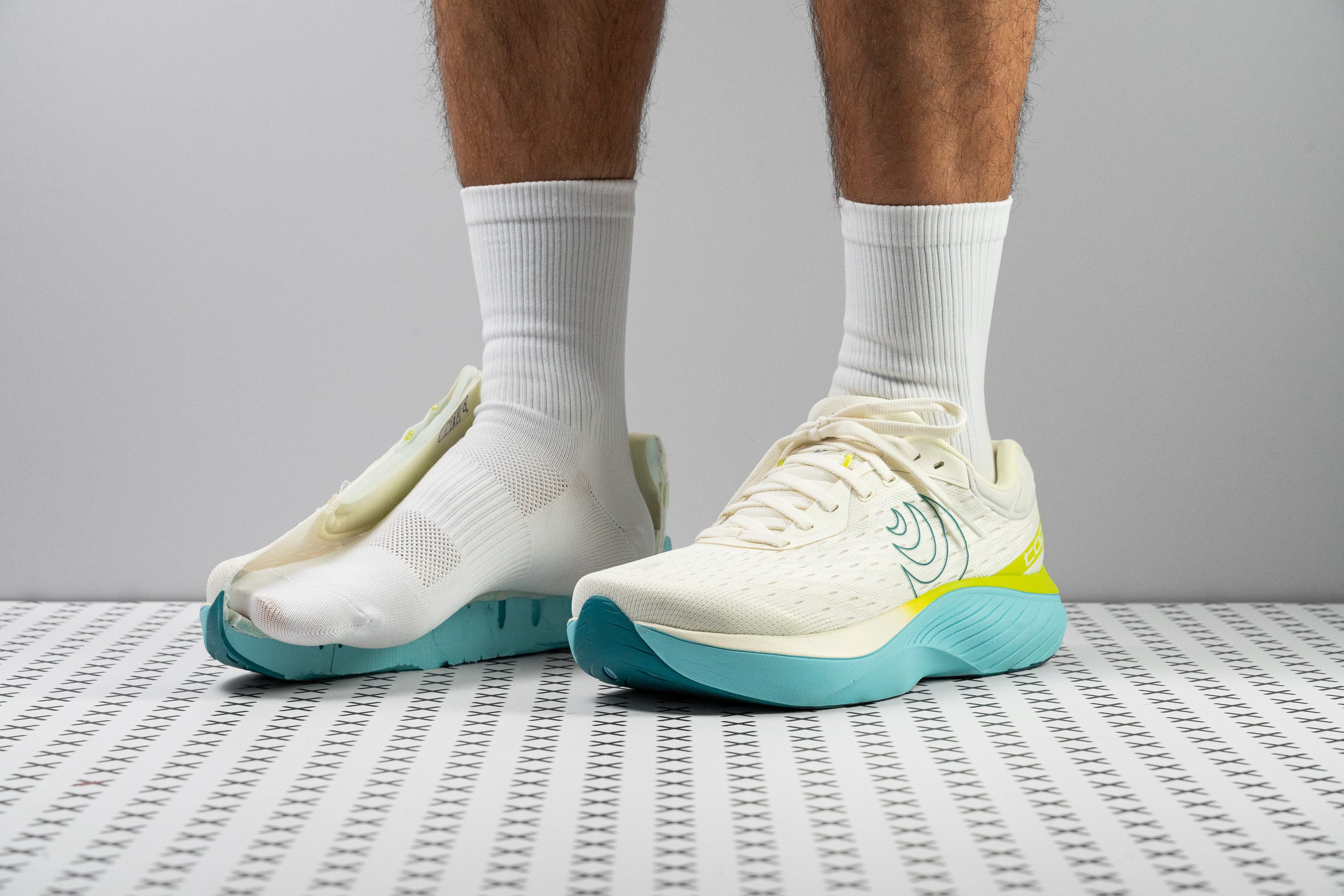

















































What makes it the best?
With its velvety and joint-friendly platform, spacious fit, and stable ride, the Topo Atmos is a reliable companion for long hours on foot and multiple trips. We measured its foam in the lab to be thick and lush, making it our best shock-absorbing wide-toebox walking shoe.
We could walk endlessly around town because the Atmos really took the load off our joints. Measuring its impact protection, we got an above-average 130 SA score, meaning it's able to reduce leg stress better than the standard.
Its spacious and non-tapered fit offers breathing room for our feet. Using our gel mould, the big toe area measures 85.0 mm vs. the 73.5 mm average. Being 15.6% wider, we had no unwanted pressure points.
Another feature that prevents fatigue is its stiff structure, guiding our foot alignment. It refused to twist in our manual assessment, so we gave it the maximum 5/5 torsional rigidity rating. On foot, this means we can say goodbye to missteps and ankle twists.
Unfortunately, its focus on comfort leaves behind responsiveness. Those who want more pep in their strides won’t enjoy this pair.
Pros
- Max-cushioned comfort
- Ultra-spacious toebox
- Stable ride
- Premium Ortholite footbed
- Midfoot-friendly geometry
- Lightweight for its huge size
- Great for easy long runs
- No heel slippage
Cons
- Lacks energy return
- Not for narrow-footed runners
- Could be a bit more flexible
- Not the best for walking
Most comfortable walking shoes with a wide toebox
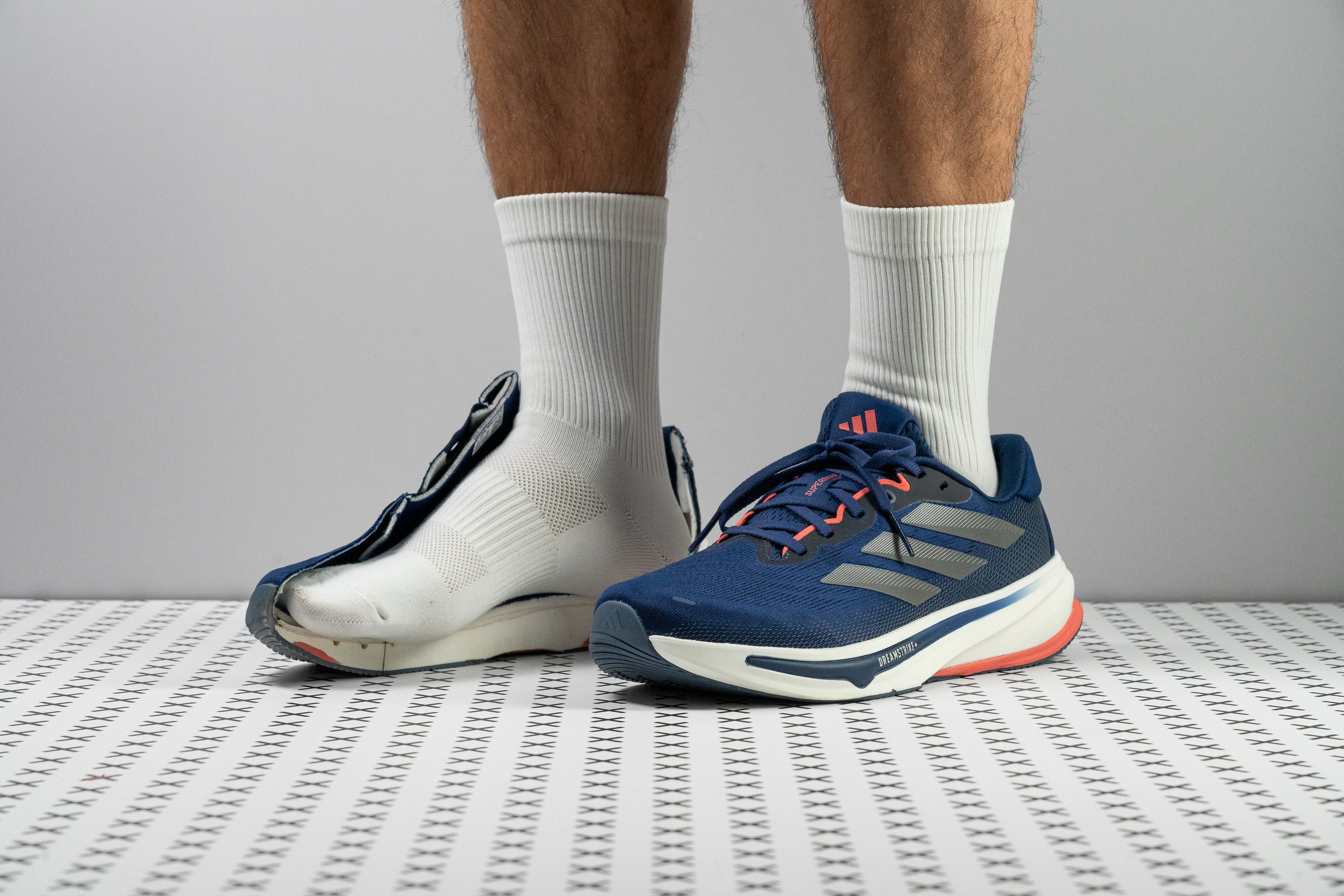

















































What makes it the best?
The Adidas Supernova Rise 2 keeps our walks cool and easy with its light and flexible build we’ve proven in our lab tests. It boasts a roomy toebox and a breathable upper, delivering unmatched comfort among all the wide-toebox walking shoes we've tested.
Supernova Rise 2 never burdened us on foot. Our scales reveal it’s only 9.1 oz (257g), 9.2% lighter than the average walking shoe. Plus, it offers minimal resistance to our natural movement. Our bend test backs us up with a flexibility score 37.6% above average!
Our toes had a lot of wiggle and breathing room, which kept the experience pleasant even during long hours of walking. Thankfully, there was no unwanted pressure, and even our pinky toes could breathe. Using our gel mould, we measured the big toe area at a massive 77.7 mm, which is 4.0 mm above average!
The light upper kept us feeling refreshed. In our lab test, the smoke we pumped into the shoe could escape, so we rated it with a high 4/5 breathability score, making this shoe suitable for all seasons.
This shoe offers a good amount of impact protection but those who equate comfort to a very plush midsole won’t find that here. We recommend looking for more cushioned alternatives.
Pros
- Lighter than version 1
- Comfortable yet breathable upper
- Cold-proof PEBA midsole
- Stable ride with Support Rods
- Reflective accents for night visibility
- Maintains competitive price tag
- Responsive Dreamstrike+ foam
- Flexible, natural running experience
- Great for walking
Cons
- Outsole lacks Continental
- Not cushioned for forefoot strikers
- Still lacks a gusseted tongue
Best stability walking shoes with a wide toebox
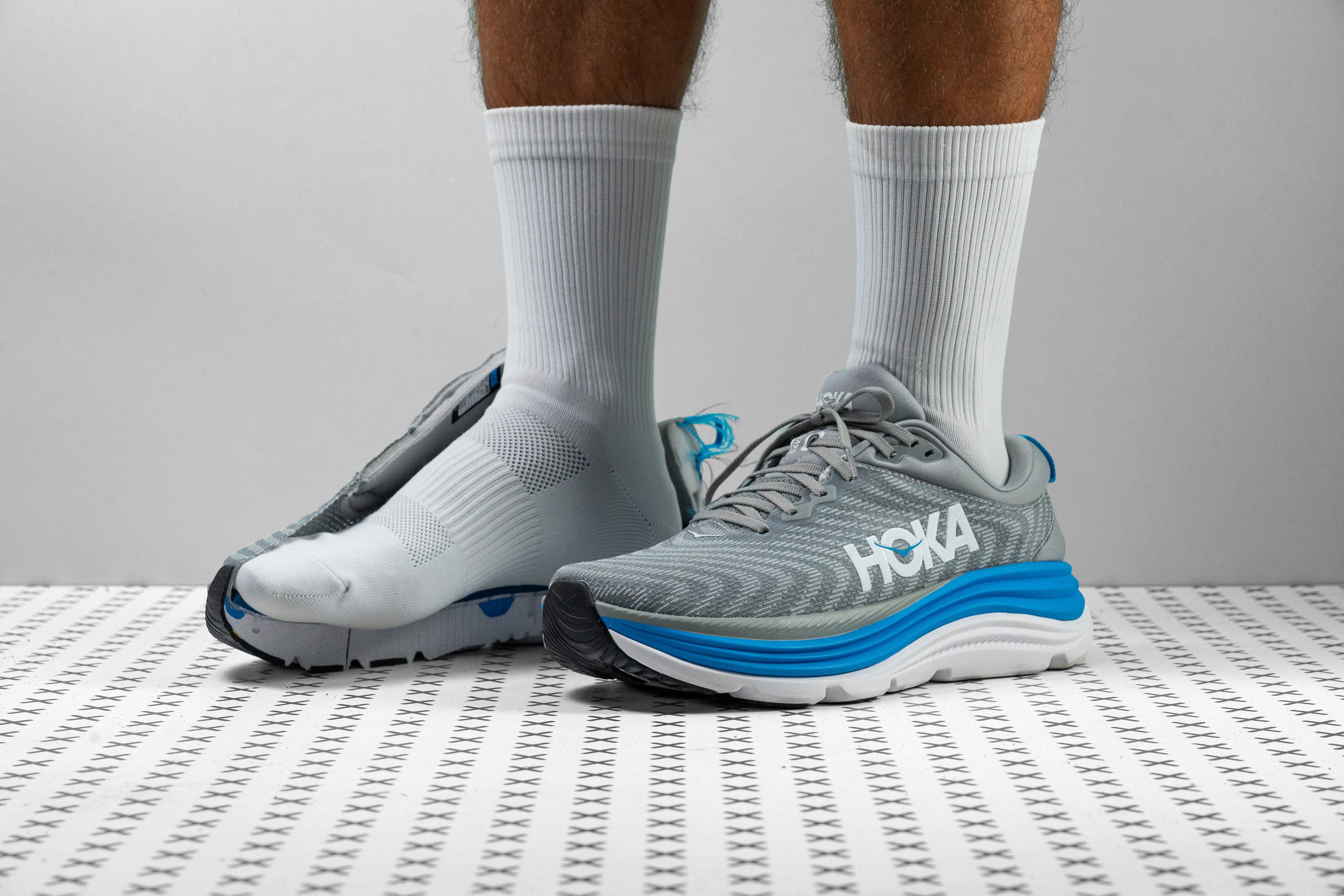


















































What makes it the best?
Among wide-toebox walking shoes, we felt the most secure with the Hoka Gaviota 5. It’s our best stability pick, offering steadiness and comfort like no other. In the lab, we found that it features a dual-density midsole, a stiff H-Frame, and a highly accommodating fit.
Gaviota 5 boasts a generous base that offers solid ground contact and steady balance. Using our calliper, we measured it at 125.1/106.6 mm, much wider than the 114.1/90.6 mm average! Not only that, it features a wide toebox which enhances control and comfort. There were no pressure points during our wear tests.
We also discovered the rigid H-Frame that adds structure to the shoe, helping keep our feet aligned and preventing excessive movements.
We uncovered the secret to this Gaviota’s plush yet secure feel: through its dual-density midsole. The main foam is soft at 12.9 HA, while there is a firmer 22.0 HA layer in high-impact areas to stabilise the ride.
Unfortunately, this shoe is much stiffer than the average walking shoe. Those who prefer a more relaxed experience should find flexible shoes.
Pros
- Remarkably stable
- Breathable and comfortable upper
- Lightweight for its size
- Good stability option for forefoot strikers
- Ideal for wide feet
- Excellent for long runs
- Excellent for long runs
Cons
- Low drop might pose issues for heel strikers
- Performs poorly in colder conditions
- Not for narrow feet
- Midsole feels flat
Best rockered walking shoes with a wide toebox



















































What makes it the best?
With the KEEN WK400, there’s no way but forward with its exceptional rocker standing out among wide-toebox walking shoes. Besides its spacious room, it features a soft, springy, and massive stack, offering boundless comfort as proven by our lab tests. The WK400 makes the miles melt away with its effortless ride.
WK400 can maintain its KEEN.CURVE, or its rockered bottom, through its stiff nylon plate. Every time we step forward, we’re smoothly assisted from our heels to our toes, making the shoe feel lighter than it is.
Cushioning is on another level as our calliper reveals an outlier heel stack measurement of 45.7 mm, which is 13.4 mm above average! Its cushion is 16.7% softer than average, keeping us away from harsh ground impact.
To get a more accurate measurement of the toebox, we used our gel mould. In the big toe area, it emerged at 74.7 mm, 4.9% wider than average. With this extra space, we didn’t experience any unwanted pressure and could easily relax all our toes.
However, the discomfort arrives when the weather becomes too hot and humid. With its subpar breathability score, those seeking maximum ventilation will be disappointed with the WK400.
Pros
- Rocker sole propels you forward
- Copious amount of cushioning
- Amazingly comfortable step-in feel
- Highly durable and abrasion-resistant
- More stable than it seems!
- Can go from road to trail
- Accommodating toebox
Cons
- Needs some getting used to
- Heavier than average
- Slippery when wet
Best versatile walking shoes with a wide toebox
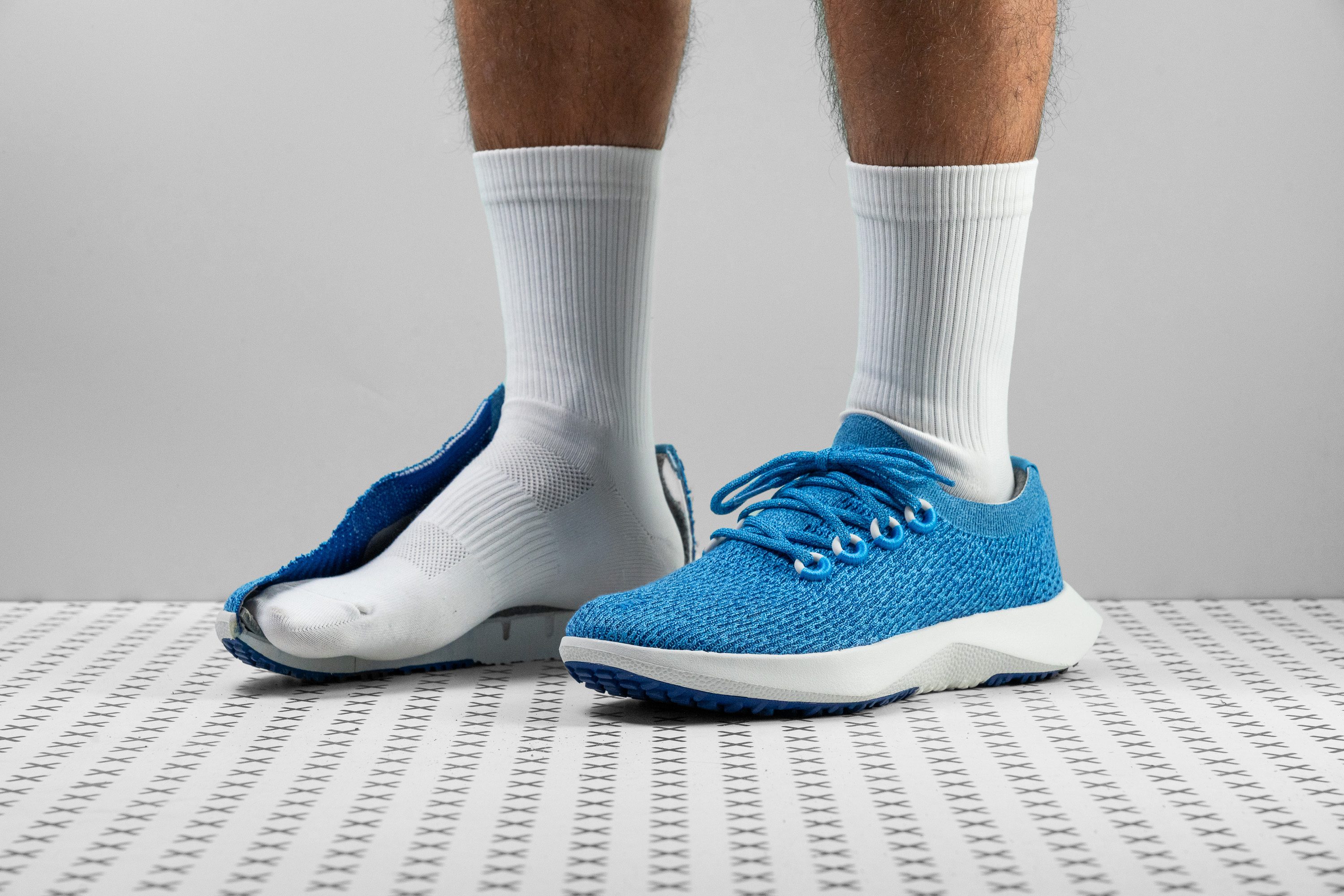













































What makes it the best?
During our wear tests, the Allbirds Tree Dasher 2 proved it could do it all, making it our best versatile walking shoe with a wide toebox! From daily errands to gym workouts to walking our dogs, it delivered the comfort and support we needed. Plus, it has a roomy and breathable build that’s the cherry on top, backed up by its impressive lab results.
The Tree Dasher 2 moves as one with our feet, which makes it comfortable for various activities. In our bend test, it emerged 30.6% more flexible than average, proving it’s a do-it-all companion.
The shoe offers generous internal real estate, giving our toes more than enough room to settle in. Using our gel mould, we measured the big toe area at 79.9 mm, much roomier than the 73.7 mm average.
Its comfort was raised to another level when we felt the breeze on our toes! In the lab, we pumped smoke into the shoe, and it escaped instantly, receiving the highest 5/5 breathability score. Another bonus? The knit upper is exceptionally durable, proven by its 5/5 toebox durability score, a rare feat in our lab.
However, it features a firm base that may not appeal to some. Those seeking a plush experience should look for alternatives.
Pros
- Comfortable and breathable upper
- Constructed with sustainable materials
- Carbon neutral
- Significant enhancements over v1
- Provides a stable ride
- Suitable for walking and gym training
- Excellent lockdown
- Spacious enough for really wide feet
Cons
- Might be excessively firm
- Overly spacious for those with narrow feet
- Pricey considering its performance
Best barefoot walking shoes with a wide toebox
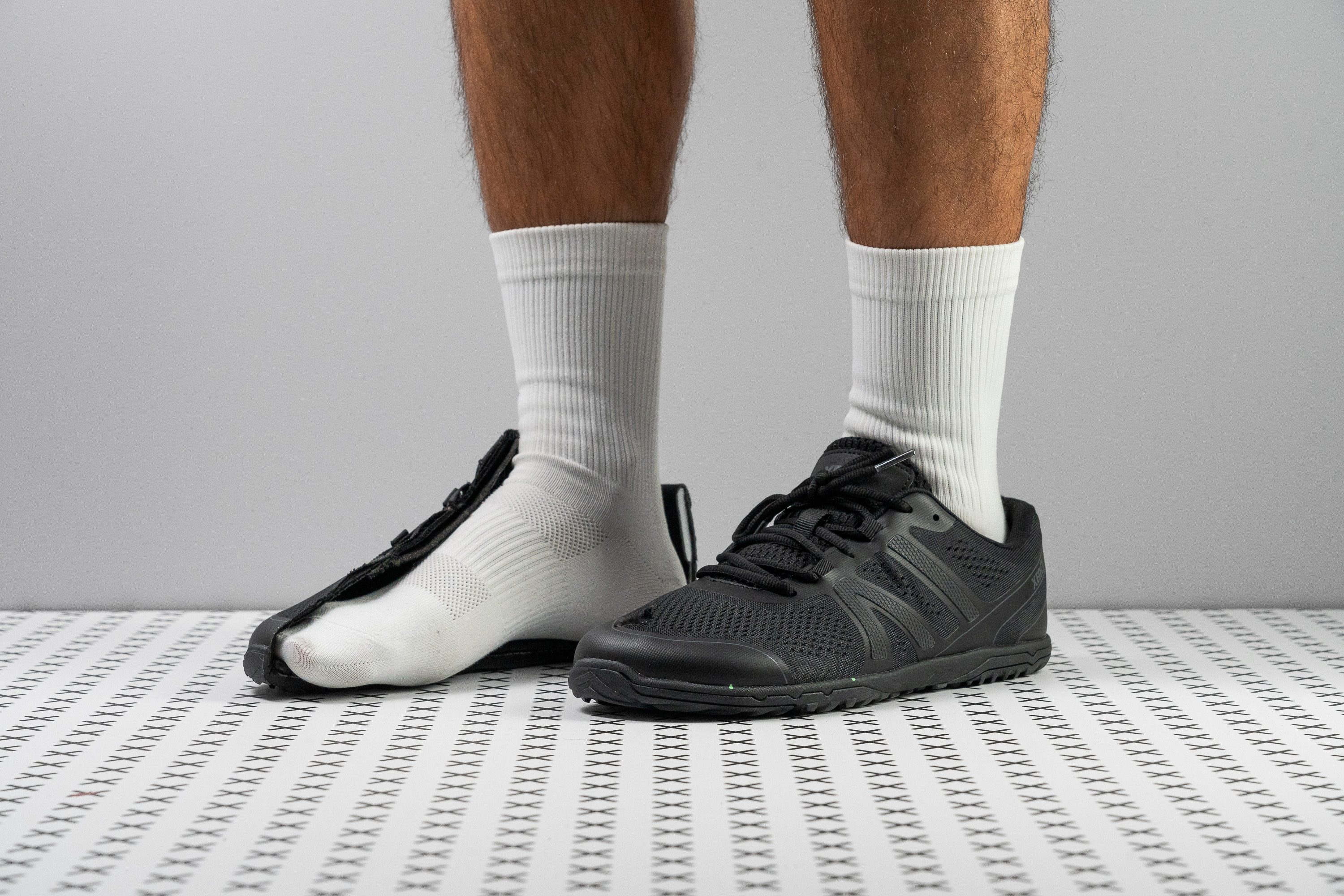







































What makes it the best?
Among the wide-toebox walking shoes we put to the test on the streets, the Xero Shoes HFS II offers the best barefoot experience because it really feels like we have nothing on! Through lab tests, we discovered it embodies minimalism through its light weight, low resistance, and low profile, which explains its subtle presence.
HFS II doesn’t demand attention, especially since it only weighs 8.6 oz (244g), 7.9% below average. What makes it feel even lighter is its highly bendable midsole. In the lab, we discovered it needs 62.6% less force than average to reach a designated angle, validating its free-flowing nature.
We attribute its malleable build to its minimal stack that magnifies ground feel. With only 13.1/12.1 mm cushioning between our feet and the streets, it almost feels like we don’t have shoes on since the average is a much higher 34.2/25.6 mm. The 1.0 mm low heel drop also makes the ride feel more natural.
The spacious toebox contributes to its soothing presence. Our toes felt relaxed because the shoe barely tapers to the big toe area. We measured it at 86.7 mm, much more generous than the 78.4 mm average.
Since the cushion is so thin, we could barely feel any bounce to enhance the ride. Those seeking a spring in their steps should check alternatives.
Pros
- Anatomical toebox for natural toe splay
- Real minimalist design
- Reasonably priced
- Versatile for roads and light trails
- Amazing at gym workouts
- Ultra-flexible and easy to pack
- Full-length outsole coverage
- Superior ground feel
- Promotes feet strength
Cons
- Midsole lacks energy return
- Heavier than most minimalist shoes
- Durability still needs improvements
When to consider walking shoes with a wide toebox
If you’ve landed on this page, there is a high chance that you are experiencing some or even all of the following discomforts:
- your toes feel cramped in most shoes
- you often develop hot spots and blisters in the toe area
- your toes tend to swell and require more space during long walks
- you have foot deformities (bunions, bunionettes, hammer toes, claw toes, etc.) which get aggravated in most shoes
- you have Celtic, German, Roman foot type and never seem to get enough room for your big toe and pinkie toe.
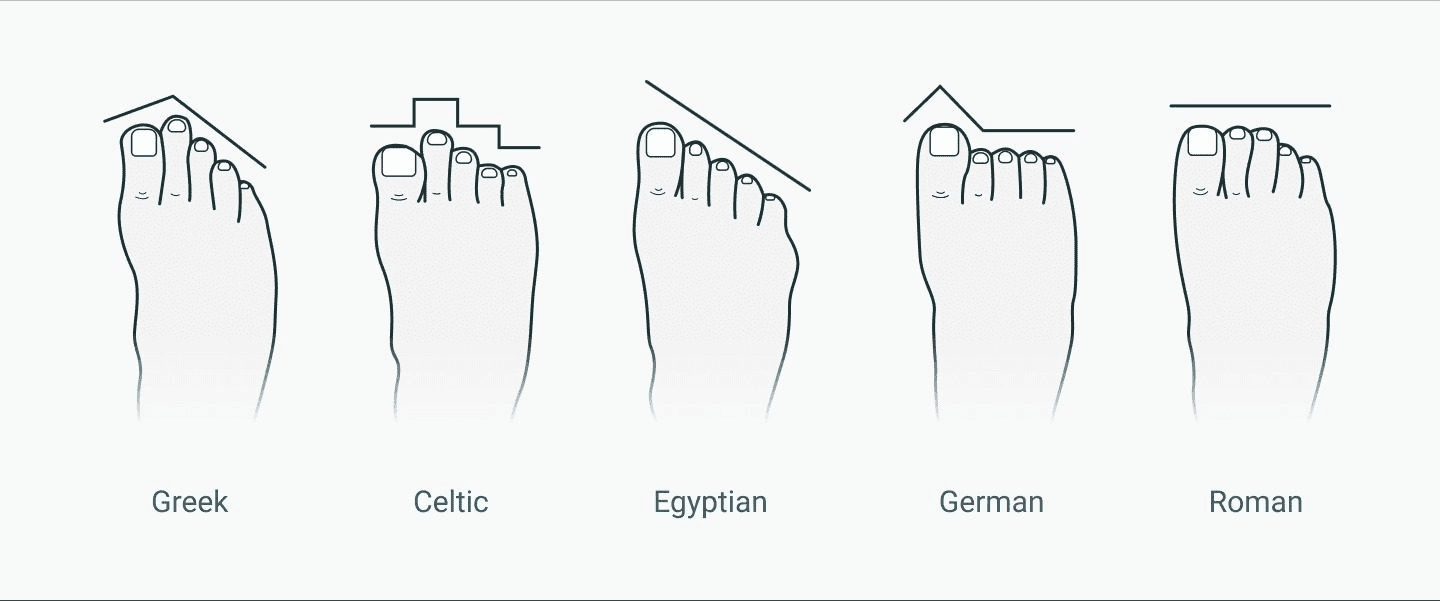
These are all surefire signs that your feet are in dire need of walking shoes with a wide toebox.
On another note, you don’t have to experience pain or discomfort to consider a wide toebox walking shoe. Maintaining that healthy wide toe spread is in itself a solid reason to choose roomy footwear.
|
Please note that a wide toebox doesn’t always mean a wide shoe in general. |
The photo below demonstrates how some shoes have a wide toebox but a medium fit in the heel and midfoot (top) while others are wide from the heel to the toes (bottom).
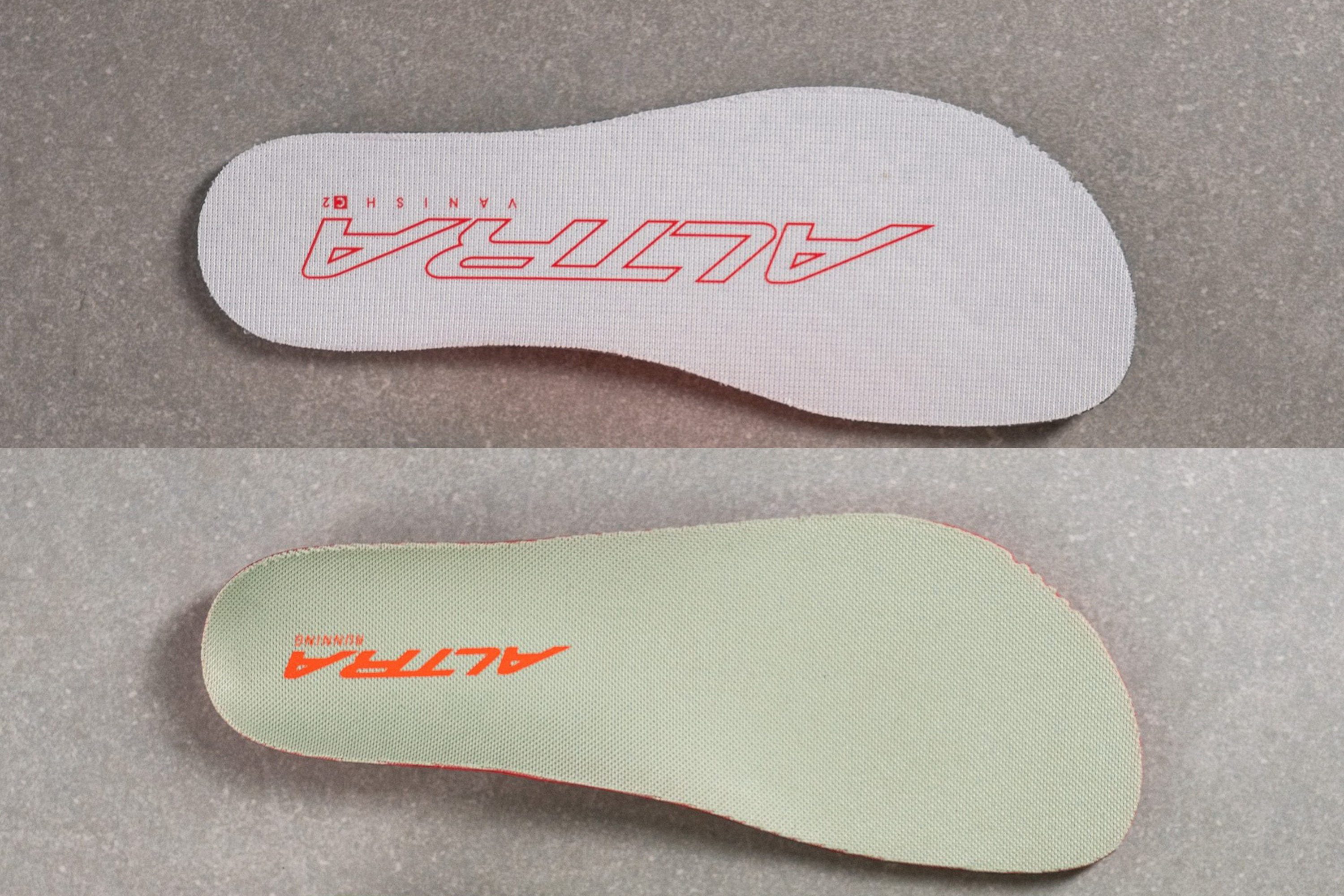
If you also experience pinch points or hot spots in the instep or in the midfoot (arch area), even when the laces aren’t tightly cinched, you most likely need a wide walking shoe in general. This could be a wide-fitting medium-width shoe or even a wide or extra-wide option. To learn more, see our guide on the best walking shoes for wide feet.
How we measure toebox width in the lab
Here at RunRepeat, we have a proprietary methodology to measure each shoe’s internal space as accurately as possible. The process involves pouring liquid gel into the shoe and waiting until it solidifies in the fridge. We then use a digital calliper to measure the mould's width in three areas:
- shoe width in the widest part
- toebox width at the big toe
- toebox height at the big toe
|
We consider the shoe’s toebox as wide if it is wide in the big toe area. |
Why is that? Because we found that shoes can be wide in the metatarsal area but get really narrow and pointy towards the front.
In the photo below, we measured the widest areas of two different shoes and our calliper showed nearly identical numbers.
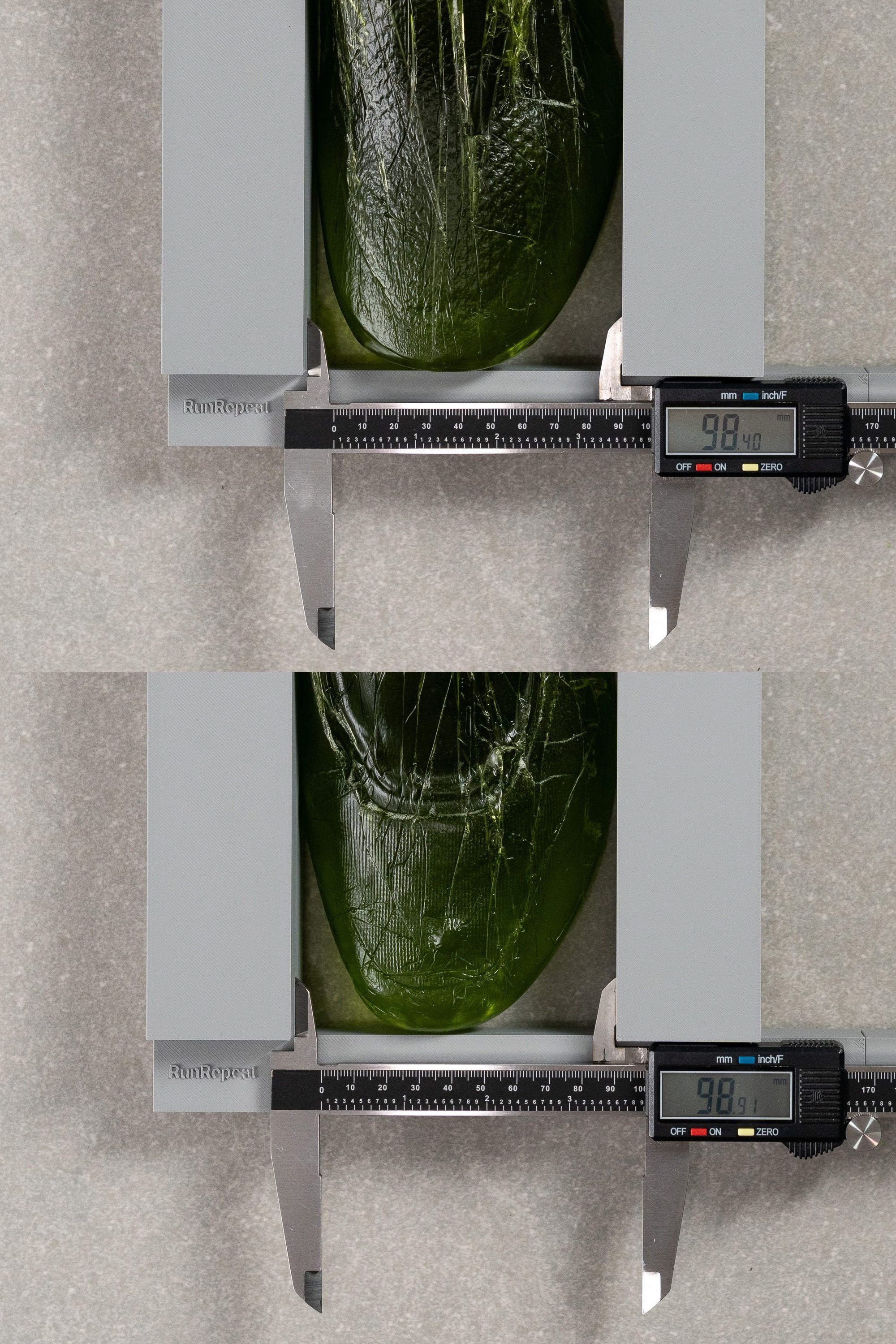
But as you can see, the toebox shape of these two shoes is notably different. Measuring both moulds in the big toe area, we found the difference to be more than 7 mm!
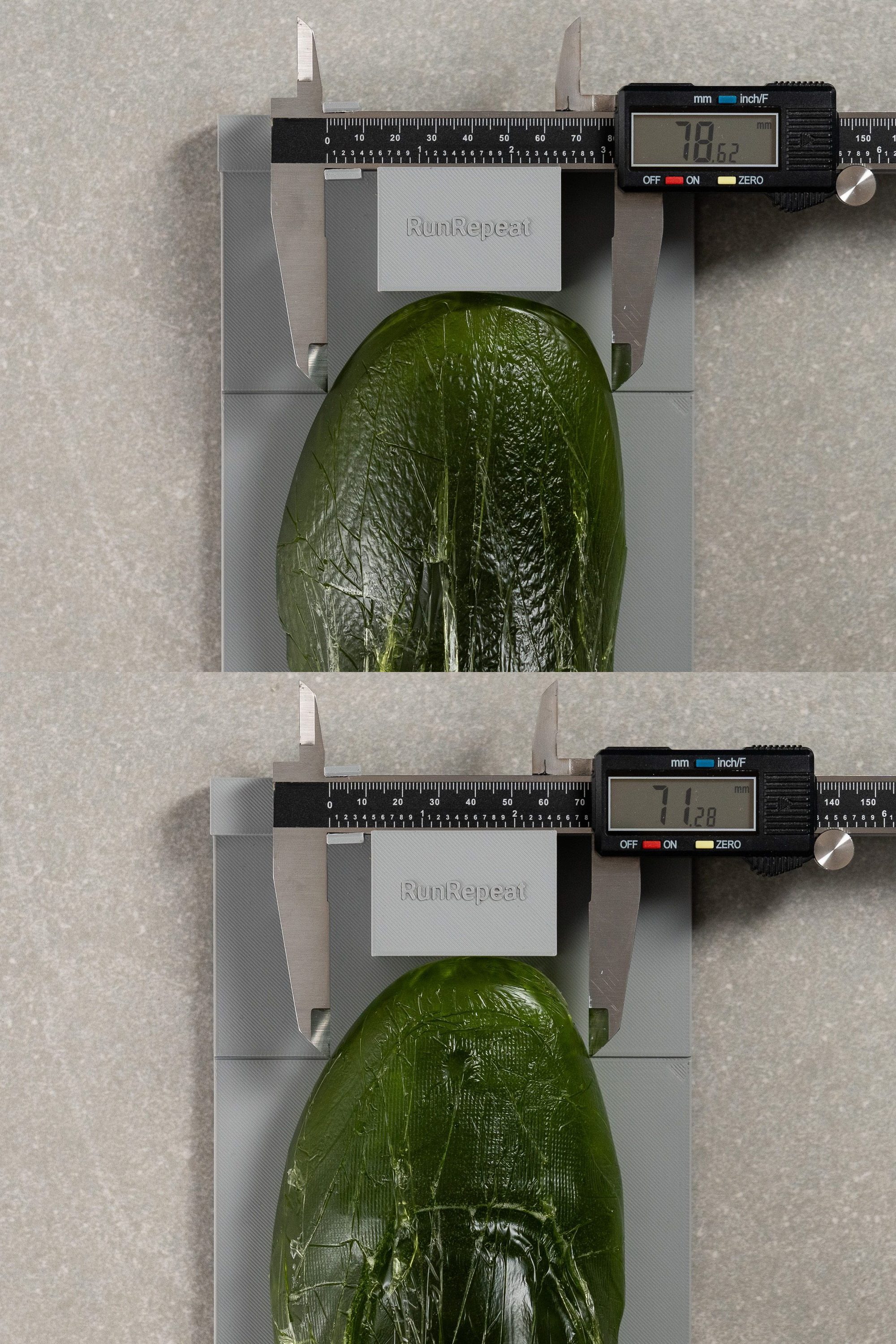
That’s why walking shoes with the most spacious toeboxes will always show an above-average width in the big toe area. Here are the roomiest of them:
Toebox height matters too
A wide toebox offers plenty of horizontal space to accommodate all five toes comfortably, but how about vertical space? Is there enough real estate above your toes as well?
This is particularly important for people with toenail concerns (i.e., black or ingrown toenails) as well as toe deformities (i.e., hammer toes, claw toes, mallet toes). With these conditions, you don’t want to experience any pressure from the toebox ceiling whatsoever.
Having poured and measured hundreds of shoe moulds, we found that the difference between the lowest and the highest toeboxes can be as dramatic as 20 mm!
